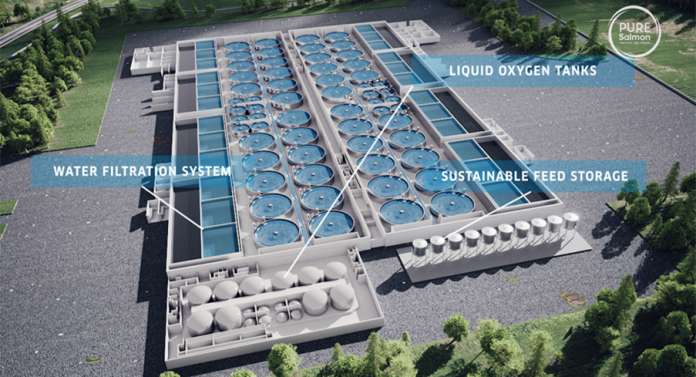AKVA group’s estimate suggests that land-based salmon will be for players with deep pockets.
As a supplier of production technology for both land-based and sea-based fish farming, the company knows better than most that investments need to be put down in order to produce a kilo of salmon.
On Tuesday, AKVA group had its capital markets day. And in the presentation material, it is stated what investment needs the equipment supplier envisages in the next ten years.
Huge investments
A paradigm shift towards land-based fish farms will require huge investments by 2030 and beyond. A “bull case”, a scenario in which the world’s land-based salmon production increases by 800,000 tonnes by 2030, will need to have as much as EUR 15 billion in investments.
If this is distributed per-kilo of salmon, AKVA group outlined with this a EUR 19 per-kilo investment for land-based salmon. Sea-based salmon, where investments are mostly for cages and feed pipes, is EUR 17.2 per-kilo.
Expensive
The investment level AKVA group here raises is supported by the land-based fish farming companies on the stock exchange:
In its Q2 report, the Florida-based land-based salmon farmer Atlantic Sapphire has a CAPEX estimate of about USD 22 per-kilo of salmon.
Andfjord Salmon will invest EUR 700-800 million to meet its long-term production 60,000 tonnes-a-year plans. This means investments of EUR 11-12.5 per-kilo.
Andfjord Salmon has ambitions to invest EUR 500 million to meet its long-term 90,000 tonnes-a-year production plans. This means investments of “approximately NOK 60 (EUR 5.6 .ed) per-kilo”, according to the company itself.
Free concessions
Salmon Evolution’s facility is by far the cheapest in this context. But it is still more than three times more expensive than a sea-based fish farm.
This, of course, means that it will be more challenging to get a return on invested capital on land than at sea.
In conclusion, it should also be mentioned that the land-based salmon farmers do not pay a single cent for their licences. And that could change the math dramatically – in their favour – if they are able to produce the salmon at a cost that is competitive and produces profits with the current market price for salmon.


